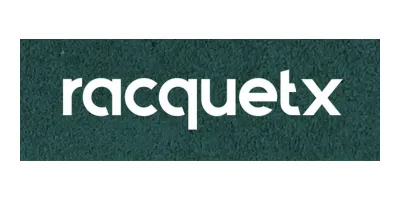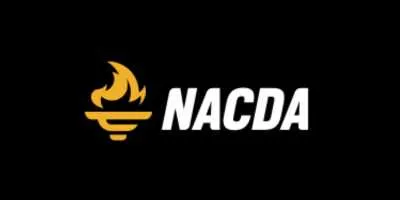Home » Running track » Rubber Running Tracks: How to Choose the Right One?

For school athletic directors and officials, having the best products, materials, and supplies for your athletes is a top priority. When choosing the material for your running track there are an endless number of options to choose from but not all materials are made the same.
If you want a top-quality running track that will provide your athletes with the best, then you need to consider using a rubber running track. In terms of maintenance, safety, and performance, rubber running tracks offer a number of advantages over other types of running surfaces.
Let’s take a look at why most modern running tracks are made from polyurethane or tartan rubber, and how these materials can benefit your school or college.
Use our running track cost calculator to get a customized cost estimate for your track project.
Polyurethane vs. Rubber vs. Tartan
Wondering about the difference between polyurethane, rubber, and tartan running tracks?
Short answer: nothing.
In the running track industry, all three terms are used interchangeably to describe the same thing – a synthetic running surface made from a polymer material. Depending on your area or when you joined the industry you might use one of these terms more than the others.
For example, the name Tartan actually derives from the brand 3M. The company was one of the first to develop and manufacture a polyurethane running surface back in the 1960s. The name has stuck ever since and is now used as a generic term for all synthetic running tracks
So, when you’re looking for a new running track for your school or college, you can rest assured that all three materials are of the highest quality and will provide your athletes with the best possible experience.

Choosing the Right Rubber Running Track System
Now that you know a little bit about why rubber tracks are superior, let’s take a look at how to choose the right system for your school or college.
There are a few things you need to consider when selecting a rubber running track:
Who will be using the track?
First, you need to understand who will be using your rubber track. The age and experience level of your athletes will play a big role in determining the type of running track system you need.
For example, if you’re looking for a track for elementary school students, you’ll need a different system than if you’re looking for a track for collegiate athletes. The thickness of the material and the level of cushioning will be different for each group.
What levels of competition are you hosting?
Next, you need to know what types of events you will be hosting on your track. If you’re only hosting local meets, you won’t need to worry about having a track that meets international standards.
However, if you’re planning on hosting bigger events, like state championships or even national competitions, you’ll need to make sure your track meets all the requirements.
What is your budget?
Lastly, you need to consider your budget. Rubber running tracks are a significant investment, so you need to make sure you have the funds available to cover the cost. Working with an expert in the field can help you maximize your funds.
But be sure not to skimp on your material choice. Lower-priced options could mean a shorter lifespan, which means you’ll be prematurely replacing your track.
Consider tapping an external resource early in the process to help you understand the cost of a rubber running track and what options are available to you.
Structure of Rubber Running Tracks
Let’s take a look at what goes into the construction of a new polyurethane running track solution.
Laying the foundation
To properly install your running track, you need to level and grade your space. This process will require machinery, expertise, and labor.
Once your space is prepared, a base layer of concrete is poured. The thickness of this layer will vary depending on the climate in your area.
The track itself is then installed atop the base layer providing a sturdy foundation that will last for years.
Permeable vs. Impermeable Surfaces
Permeable tracks are porous in nature and allow water and moisture to flow through them. These types of tracks are often installed in areas with high rainfall or excessive humidity.
There are several options for permeable tracks:
- Incorporate permeable asphalt material beneath the surface. This helps water move more quickly away from the track.
- Install a porous material atop impermeable concrete or asphalt.
In the latter option, your base layer can erode quickly because water isn’t allowed to escape. This decision is best left to a trusted professional that is knowledgeable and familiar with your location and climate.
Impermeable tracks are non-porous and use a slight grade and gravity to help water move off and away from the track. These types of tracks are most often installed in areas with low rainfall or minimal humidity.

Different Types of Rubber Running Track Systems
If you’re ready to install a rubber running track, you have a few different options. Here are the three most popular types of tracks:
Paved-in-place track system
These systems usually have a two-layer base with a layer of EPDM polyurethane for the surface. A paved-in-place system is spike resistant and durable but doesn’t offer the most cushion for runners.
- Polyurethane-rubber base mat only, permeable surface (up to middle school, recreational)
- Base mat + structural spray coat on top, permeable surface (elementary to high school)
- Base mat + structural spray coat on top, impermeable surface (elementary to high school)
Sandwich track system
These systems are best for intermediate-level, high-school, and collegiate-level competitions. The construction of a sandwich track system is similar to a paved-in-place, however, the basemat is crowned with layers of EPDM to create a stronger bond.
Sandwich track systems are durable and offer athletes an incredible running experience. However, this option can be expensive, so make sure you have the budget to accommodate this top-of-the-line system.
Full-pour polyurethane track system
In a full-pour, the base layer is comprised of polyurethane and recycled rubber. The top layer often comes with EPDM granules to offer more support for runners.
The surface of full-pour systems is usually impermeable, meaning you’ll need a grading system to wick water away. In areas with heavy rains, this can be a drawback.
Pre-fabricated rubber tracks
The last option is to have a pre-made rubber track installed in your facility. This will ensure you get a quality product that meets your specifications, but it can also be the most expensive option.
A pre-fabricated solution is best for high levels of competition where the track will get a lot of use. If you’re on a tight budget, this might not be the best option for you.

The Benefits of Rubber Tracks
Performance
One of the most important factors to consider when choosing a running track material is performance. After all, the whole point of having a running track is to allow athletes to train and compete on a surface that will help them run their best.
Low Maintenance
Rubber running tracks are very low maintenance. The materials are extremely durable, making them a perfect solution for outdoor venues and facilities. When pricing your new running track it’s vital to consider all costs. Maintaining your track can be costly, especially if you have to replace the surface every few years.
With a rubber track, you won’t have to worry about this. The material is designed to last for many years with very little upkeep required. This means that once your track is installed, you can focus on training your athletes and leave the maintenance to us
Safety
If you’ve ever gone for a run or jog on a concrete surface, then you know how hard it can be on your joints. The constant impact of your feet hitting the ground can lead to serious injuries over time.
One of the biggest advantages of using a rubber running track is the added safety it provides. The material is much softer than other solutions, meaning that there is far less impact on your joints. This can help to reduce the risk of injuries, making it a perfect choice for schools and colleges.
In addition, rubber tracks also drain exceptionally well, meaning that they provide a safe surface for athletes to train on, even after heavy rainfall.
Grants and Funding Opportunities for Rubber Running Track Projects
A new polyurethane running track is a significant investment for your school — but the right choices can make it a smart choice. Luckily, there are a few different grants and funding opportunities available to help offset the cost of your project.
Grants
Local, state, and federal government programs are available to help offset some or all of the cost of your project. Work with a running track expert and project manager to better understand your options.
Crowdfunding
Crowdfunding is a great way to fundraise for your project. You can use platforms like GoFundMe to solicit donations from friends, family, and members of the community.
Local business sponsorship
Another option is to seek out local businesses that are willing to sponsor your project. This can be a win-win for both parties — the business gets advertising in your facility, and you get much-needed funding for your project.
Parents and Booster Clubs
Finally, don’t forget about the power of parents and booster clubs. These groups are often willing to fundraise and solicit donations on behalf of the school.
Get a Cost Estimate at an Early Stage
Installing a rubber running track is a big decision — but it doesn’t have to be a stressful one. Work with a reputable company that specializes in running track installation, and make sure you get a cost estimate at an early stage in the process. This will help you better understand the scope of the project and set realistic expectations for the final result.
When you’re ready to take the next step, take a look at our simple cost calculator to get a better idea of your final price. We’ll put you in touch with local experts that know how to get the job done right.











